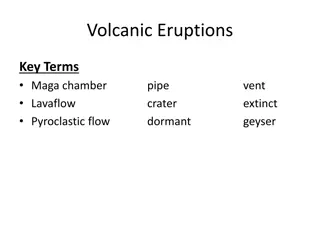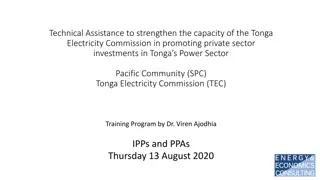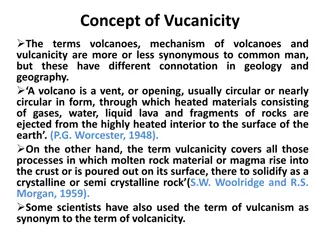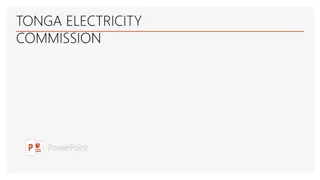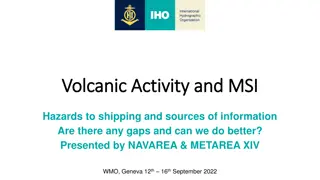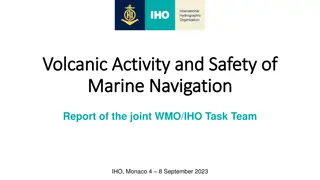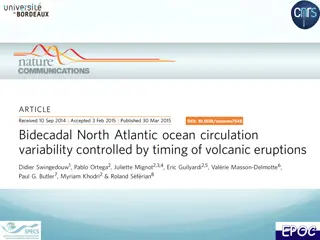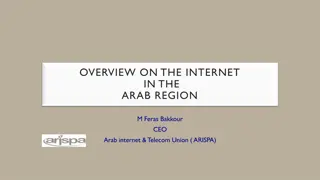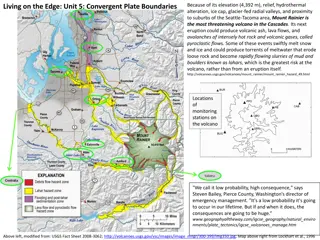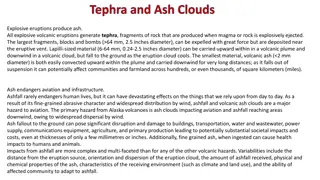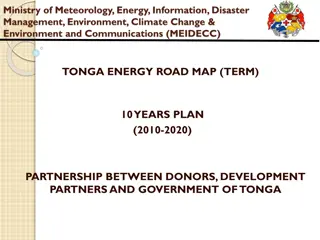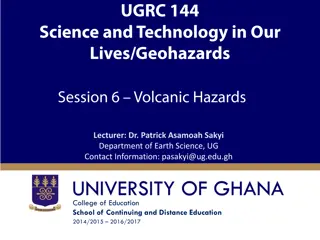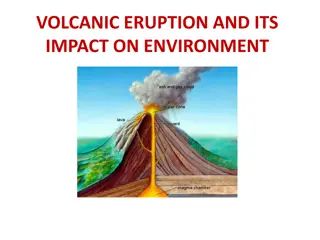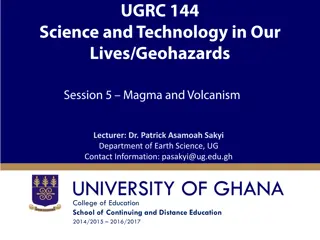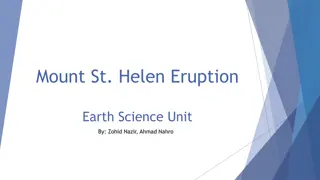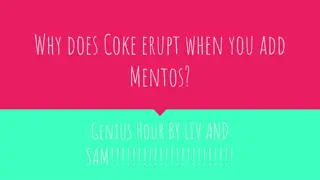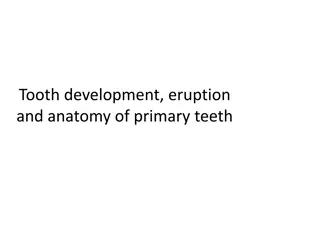Insights on Tonga's Internet Situation Post-Volcanic Eruption
Following the volcanic eruption in Tonga, disruptions in the internet connectivity were observed, with cables failing and challenges in utilizing satellite capacity. The potential of Starlink to assist was explored, revealing obstacles like signal impairment due to the volcanic ash and satellite positioning issues. Lessons from this event shed light on the importance of resilient communication infrastructure in disaster-prone regions.
Download Presentation

Please find below an Image/Link to download the presentation.
The content on the website is provided AS IS for your information and personal use only. It may not be sold, licensed, or shared on other websites without obtaining consent from the author. Download presentation by click this link. If you encounter any issues during the download, it is possible that the publisher has removed the file from their server.
E N D
Presentation Transcript
What happened to Tongas Internet after the volcanic eruption? Insights and lessons from the last five weeks Ulrich Speidel School of Computer Science, The University of Auckland
Prior to January 15 Pilfered from Google Maps
Vavau Branching unit (BU) Ha apai HTHH volcano Domestic cable Tongatapu to Suva cable submarinecablemap.com
Initial timeline 15/1/2022 (with Shane Cronin) 0405 UTC: M5.8 quake 0406 UTC: first plume visible 0416 UTC: eruption plume reaches 16-18 km 0427 UTC: tsunami generated 0430 UTC: first tsunami hits Nuku alofa, videos get posted online. Domestic cable fails. 0544 UTC: international cable goes down
Vavau Branching unit (BU) Vava u and Ha apai: No common fibre pair, unable to communicate between each other Ha apai Domestic cable X HTHH volcano Tongatapu to Suva cable X submarinecablemap.com
Cables down? How about satellites? Satellite capacity typically costs several US$100 / Mb/s / month Not competitive with a working cable Procuring significant amounts of satellite capacity normally takes a while (frequency coordination, dish setup / alignment / testing) Capacity isn t necessarily available on tap Few satellites over the Pacific Most capacity already committed to existing customers Not all networks are present in the region Kacific, Intelsat and SES came to the party with > 1 Gb/s of capacity about 15% of normal bandwidth
Could Starlink help? Starlink: SpaceX s new low-earth orbit network Better than geostationary if you can make it work Shane Reti tweeted Elon Musk to ask for help Elon Musk tweets back, initially reluctant, but then decides to give it a go Challenges: Starlink not yet able to provide links between satellites No existing Starlink ground stations in the region Starlink satellite density over tropics is low Fibre-connected places around Tonga are too far away for proper service require satellites to be in optimal position to bridge Geostationary arc behind some satellites means they cannot be used without creating interference to geostationary satellites Impaired signal path while ash is present
Enter the cable ship CS Reliance Based in Port Moresby (PNG) at the time. Mobilised on 21/1 Went to Apia (Samoa) depot first to pick up spare cable Sailed with ~80 km of cable on board Some spares taken were borrowed from other cable systems Arrived on site on January 2 CS Reliance (own photo) In preparation, Tonga Cable had done OTDR/COTDR* measurements to determine extent of faulty cable Over 80 km on international cable Around 77 km on domestic cable *(Coherent) optical time domain reflectometer
Typical submarine fibre cables Inside to outside (total thickness ~3-4 cm) Fibre core between two and a few dozen fibres Tonga cable has 2 pairs = 4 fibres Each fibre is thinner than a human hair, sheathed by plastic Core conduit to protect core from surrounding steel Steel cable to give mechanical strength Copper layer to conduct power to the optical repeaters One repeater needed every 70 km or so depending on capacity Repeaters on the Tonga cable cost US$230k each High voltage supply Thick plastic insulator Metal shielding Plastic insulation on the outside
Laying and recovering submarine cables Laying ( paying out ) Need for slack control Cutting By ROV, or CD: Cutting drive (drag) Recovery HD: Holding drive (drag)
What a run-of-the-mill cable repair in 2000 m of water looks like 1. Cut cable at or near the damage site with ROV CD will be used in low visibility 2. Recover each cable end with a HD around 2 km away from cut First recovered cable end is inspected, sealed, and tied to a buoy 3. Splice second cable end to a spare piece of cable This is needed as the cable ends will be some distance apart at the surface 4. Return to first buoy and splice the spare piece to cable end there 5. Lower cable into a loop on the seafloor to prevent messy tangles Total: 2 HD s and at most one CD
Overview of cable ship operations to date Hunga Tonga Hunga Ha apai Vava u Ha apai Domestic cable work (ongoing) Western area Repeater search Eastern area Tongatapu Chart and track courtesy BigOceanData.com
Overview of cable ship operations to date Hunga Tonga Hunga Ha apai Vava u Ha apai Domestic cable work (ongoing) Western area Repeater search Eastern area Tongatapu Chart and track courtesy BigOceanData.com
Initial operations near Tongatapu approx 1500 m 2/2/22 22:35 Arrival from Apia 5/2/22 17:25 ROV operations Tongatapu end secured to buoy here x 2/2/22 22:56 Holding drive to lift cable off seafloor 5/2/22 13:27 3rd HD Nominal cable route as per BigOceanData chart All times in UTC Chart and track courtesy BigOceanData.com x Official position of 1st break from Tongatapu
Later operations near Tongatapu approx 5000 m To Hunga 8/2/22 16:20 8/2/22 12:53, displaced cable end found here 6/2/22 15:47 5th HD 6/2/22 03:32 4th HD 7/2/22 12:40 7th HD 7/2/22 01:52 6th HD Cable trace by ROV 6/2/22 17:13 6/2/22 20:29 Nominal cable route 8/2/22 02:22 7/2/22 14:23 7/2/22 07:50 6/2/22 09:18 6/2/22 23:40 5/2/22 22:15 All times in UTC Chart and track courtesy BigOceanData.com All drives here are holding drives any cutting was done by ROV
How come a cable piece ended up closer to Hunga than before? Likely caused by a turbidity current from a location other than Hunga Precedents for cable damage from these date back to the Grand Banks EQ in 1929 Submarine landslide Slopes possibly charged by ash from Hunga Significant amounts of seismicity Possibly more than one event Fits with the late failure of the international cable
Initial western operations (with impaired seafloor visibility) Cutting drive Current position, stationary Holding drive Holding drive Chart and track courtesy BigOceanData.com
Why low visibility at 2000 m depth? Another, later turbidity current?
Operations week to 21/2/22 18/2/22 14:30 Arrival at western end of repair zone 20/2/22 Eastbound track at around 4 kn max. Cable laying 20/2/22 10:52 Still tracking east at just over 4 kn. 19/2/22 12:50 Reliance spent over 14 hours at this position. Start of repair & minor fix to cable exterior Repeater recovery attempts (all HDs, unsuccessful) 18/2/22 06:00 Eastern buoy inspection (drive-by only) All times in UTC Chart and track courtesy BigOceanData.com
Operations on 21/2/22 Final splice Chart and track courtesy BigOceanData.com
Outcome so far Tongatapu reconnected About 40 km of cable recovered About 90 km of cable laid 80 km + 40 km 90 km = 30 km Will 30 km be enough to fix nearly 80 km of out-of-action domestic cable? We don t know yet but likely, no
Starlink and others Starlink established new gateway in Suva Supposed to go live this week Will they be able to provide continuous service to their 50 terminals? At what data rate? Would it be better for them to also establish themselves with ground stations in Tongatapu and / or Niue? Numerous other satellite providers Geostationary services Much of this capacity is now being redirected to Ha apai and Vava u
Conclusion Massive cable damage and location points at turbidity currents not coming from Hunga Could there be more unstable slopes lurking in the vicinity of the cable? Timing and visibility suggest multiple turbidity currents Loss of link underlines need for redundancy Second cable is in the planning, but some time off Starlink could have really made a difference here in a year or so Hopefully, the Pacific is now on more people s radar
Thanks to: BigOceanData for making ship traces available An engineer at Tonga Cable for answering many of my questions Etuate Cocker for letting me use his network Shane Cronin, James White, Colin Whittaker, Paul Jarvis and their teams for working on this and explaining things to me Shane Reti for putting Elon Musk on the spot Many others!
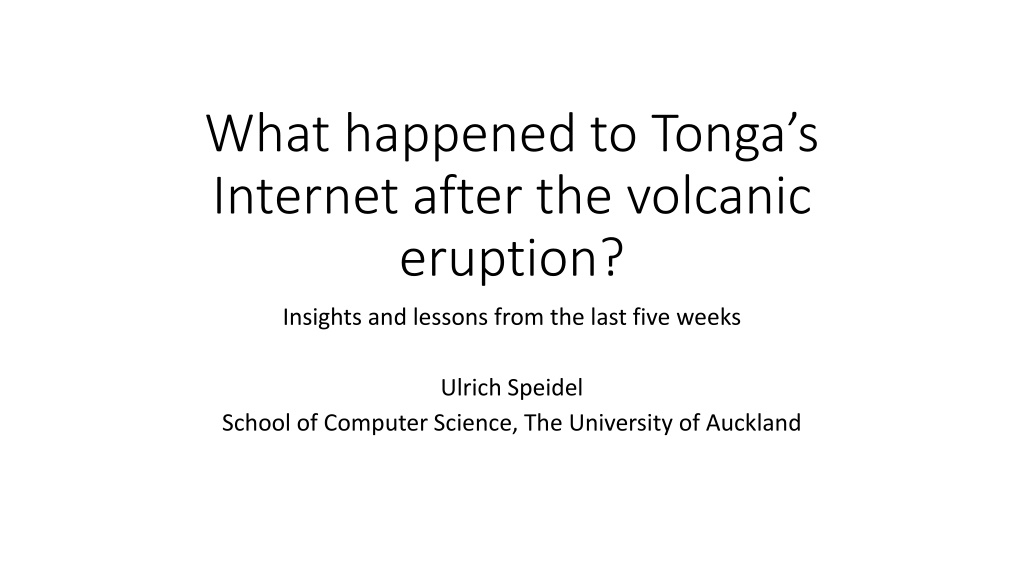

![Read⚡ebook✔[PDF] Io After Galileo: A New View of Jupiter's Volcanic Moon (Sprin](/thumb/21612/read-ebook-pdf-io-after-galileo-a-new-view-of-jupiter-s-volcanic-moon-sprin.jpg)
